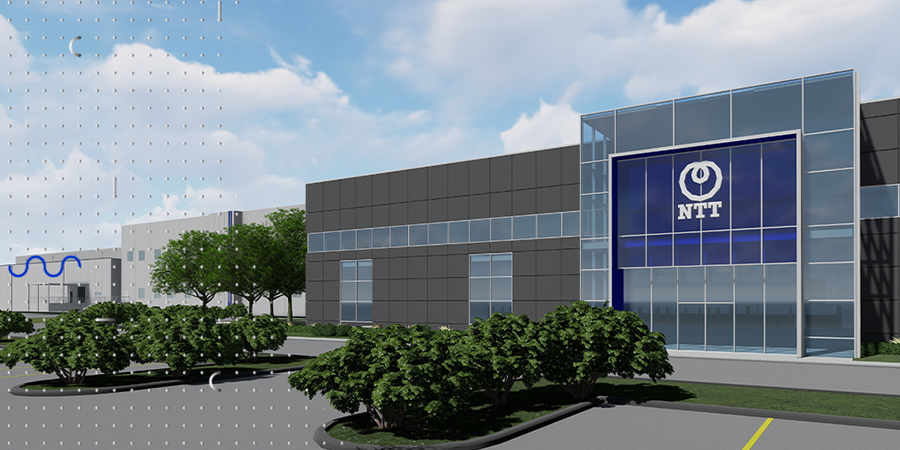NTT Ltd opened of two new 36-megawatt (MW) data centers in Chicago, IL, and Hillsboro, OR. This marks the first two of four data center openings expected for the Americas region this year, with a completely new Silicon Valley campus and a planned expansion in Ashburn, VA.
NTT Ltd.’s CEO for the Global Data Centers division in the Americas, Doug Adams said, “2021 is going to be a year like no other for our division and opening these two new data centers is just the beginning. Not only will we continue to expand both the Hillsboro and Chicago campuses, but we’re also looking forward to our new Silicon Valley campus, expansion in Ashburn, as well as breaking ground in Phoenix. These efforts underline our commitment to put our clients at the center and bring data center services to key data center markets across the Americas.”
Both Hillsboro and Chicago are the first data centers to open at the two new campus locations with plans to expand the Chicago campus to 72MW and the Hillsboro campus to 126MW. These new additions join three other existing campus locations in the Americas region, including Sacramento, CA; Dallas, TX; and Ashburn, VA.
NTT Ltd.’s Executive Vice President for the Global Data Centers division, Ryuichi Matsuo added, “We’re excited about the strength our Global Data Centers division brings to our NTT clients and partners. NTT delivers premium data center platforms around the world, giving our clients the power to deploy advanced services at the right place, with the right performance and support. NTT's capabilities and expertise are the foundation for thousands of successful business initiatives. The full stack services in our data centers are critical to our overall infrastructure, and we’re not slowing down. In 2021, we’ll continue to expand in Indonesia, Germany, UK and Spain as well as in Americas.”
Chicago Campus Details
The 36MW Chicago data center sits on a 19-acre campus just 25 minutes from the O’Hare International Airport. When finished, the campus will feature two data centers providing 72MW of critical IT load. For national enterprises, hyperscale cloud, and IT services firms seeking to add centralized data center capacity to power recent, latency-sensitive workloads, Chicago is a prime location for their demanding requirements.
The facility offers diverse utility power feeds for superior redundancy and low-cost power with renewable energy options. The campus also provides connections to multiple Tier 1 carriers, direct cross connects via dark and lit fiber to other local data centers and businesses, and secure, direct interconnections to major cloud providers and SaaS applications.
Data center clients are attracted to the Chicago market for its affordable electricity, minimal risk of natural disasters, and low latency to both U.S. coasts by virtue of its central location. In addition, Illinois exempts qualifying data centers from paying state and local sales taxes on equipment such as servers and storage racks.
Hillsboro Campus Details
The 36 MW Hillsboro data center is situated on a 47-acre campus at the heart of the Pacific Northwest technology hub and offers organizations the ability to meet sustainability goals with optional carbon-neutral IT and 100% renewable energy options. When the entire campus build is completed, it will deliver 126MW of capacity with more than one million square feet of data center space. Check out the full build plan here.
The Hillsboro campus also earned a Level 3 certification from the Cleaner Air Oregon program, the highest level of certification for a data center in the area. The facility is built for superior reliability from N+1 electrical and mechanical redundancy. A variety of cables deliver low-latency connections between the U.S. and high-growth Asian markets, giving organizations the low latency, they need to serve market expansion initiatives as well as the latest services that need next-level responsiveness.
Hillsboro data center clients can save millions of dollars a year thanks to competitive pressures, tax incentives in this business-friendly city, and lower electricity and business tax climate management costs.










